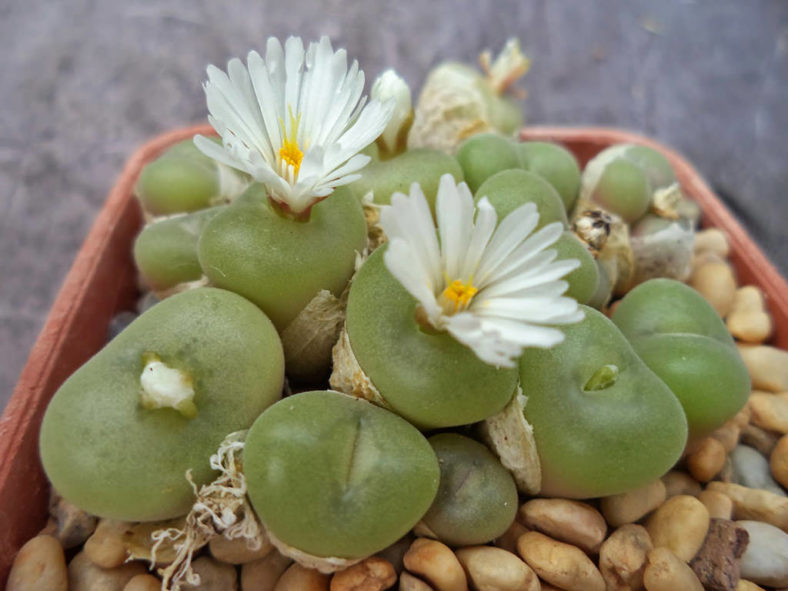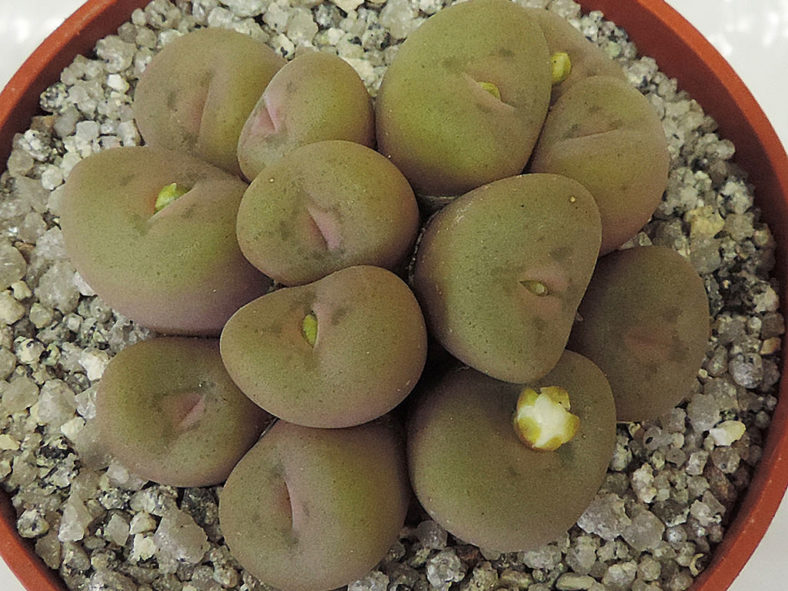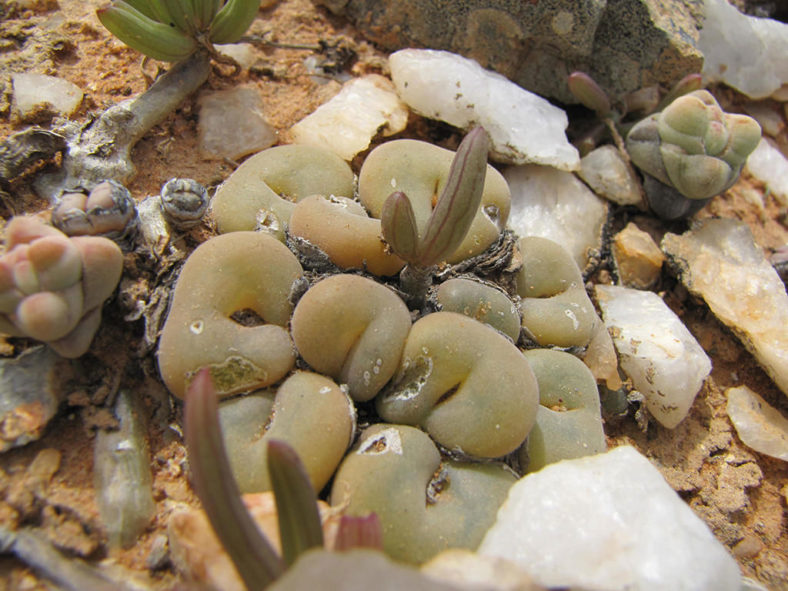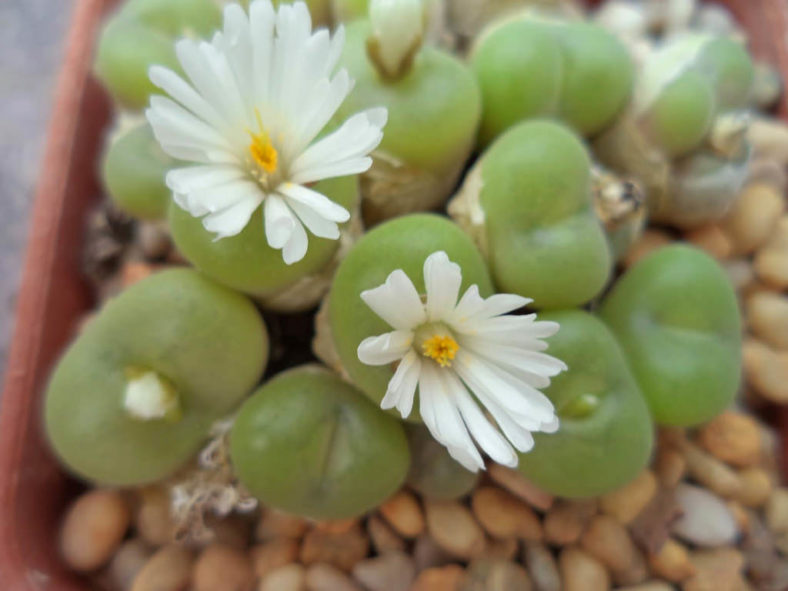Scientific Name
Conophytum concavum L.Bolus
Scientific Classification
Family: Aizoaceae
Subfamily: Ruschioideae
Tribe: Ruschieae
Genus: Conophytum
Etymology
The specific epithet "concavum (kon-KAV-um)" means "concave, hollow" and refers to the shape of the upper surface of the bodies.
Origin
Conophytum concavum is native to South Africa. It occurs in Riethuis, northeast of Hondeklipbaai in the Northern Cape, growing on saline quartz flats.
Description
Conophytum concavum is a dwarf succulent with two opposite leaves fused into a body with a subtranslucent apex and a depressed central fissure. It produces offsets readily and forms a dense clump with age. The bodies can grow up to 0.8 inches (2 cm) tall and nearly equal in diameter, resembling small, green, pale yellow, or blushing peaches.
The flowers are solitary, diurnal, honey-scented, and appear in late summer and early fall. They are daisy-like with white to rarely yellow petals.

How to Grow and Care for Conophytum concavum
Light: This succulent needs bright light but does not like too much direct sun. To avoid sunburn, place your C. concavum in a position to receive a few hours of full sun in cooler periods of the day. The plant stretches if it needs more light.
Soil: C. concavum thrives best in porous soil mixes that allow water to drain away quickly. Use a commercial potting mix specially designed for growing succulents, or make your own.
Temperature: High temperatures are not a problem, but the plant can be damaged when the temperature goes below freezing. C. concavum can withstand temperatures as low as 35 °F (1.7 °C). USDA Plant Hardiness Zones 10b to 11b, 35 to 50 °F (1.7 to 10 °C).
Watering: When it goes dormant in the spring, C. concavum requires little or no water. When it begins to grow again in the fall, it is safe to water deeply, allowing the soil to dry before between waterings. If leaves start to wrinkle during active growth, your plant needs water.
Fertilizing: This small succulent is a light feeder and does not need fertilizer if repotted every two years.
Repotting: The best time to repot C. concavum is at the beginning of the active growth period, but the repotting can be done almost any time while the plant is actively growing.
Propagation: This species is usually grown from seeds. Like all Conophytums, it is also easily propagated by division. The best time to divide C. concavum is in late summer or early fall before it begins to break dormancy or after it has flowered. Sow the seeds in fall in a pot with a well-drained soil mix.
Learn more at How to Grow and Care for Conophytum.
Toxicity of Conophytum concavum
C. concavum is non-toxic and safe to grow around children and pets.
Links
- Back to genus Conophytum
- Succupedia: Browse succulents by Scientific Name, Common Name, Genus, Family, USDA Hardiness Zone, Origin, or cacti by Genus
Photo Gallery
Click on a photo to see a larger version.


